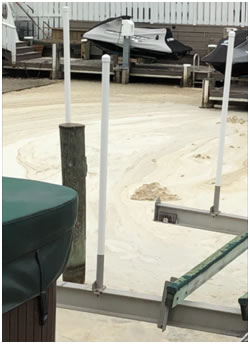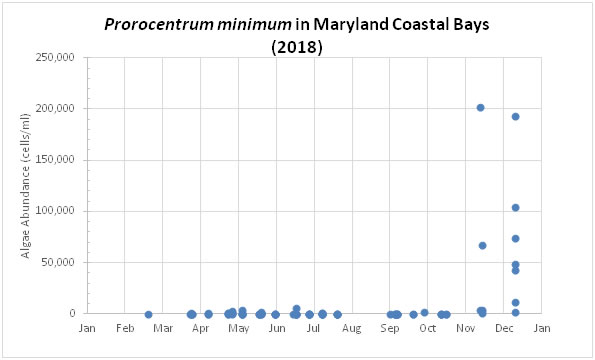| March 19, 2019 Maryland Coastal Bays experience unusual winter Mahogany Tide |
|
The Maryland Coastal Bays are experiencing an unusual bloom of the microscopic algae, Prorocentrum minimum this winter. Large blooms can give the water a reddish-brown coffee color, when cell counts exceed 3,000 cells per milliliter, thus giving it the name ‘Mahogany Tide.’ Harmful Mahogany tides (>10,000 cells/ml) are typically observed during May in the Chesapeake Bay and April to June in the Maryland Coastal Bays. Bloom levels have previously been observed during the winter when unseasonably warm weather occurs but not like the scale and duration of the bloom this winter. Potential harmful effects include decreasing light to bay grasses as well as contributing to the dead zone when the large bloom of algae dies and decays. This can lead to fish and shellfish kills. This species is not known to produce toxins in our region. Regardless, the State continues to work to reduce algae bloom-fueling nutrients in all Maryland waters. Bloom levels began to be observed widely in November and December of 2018 in Isle of Wight and Assawoman Bays. The unusual winter bloom is suspected to be a factor of elevated nutrients in the bay resulting from the record setting rainfall last year along with elevated winter water temperatures in November and December. The abundance of algae died back in January and early February leading to large accumulations of sea foam in some areas of the bays (sea foam is a natural occurrence when there is a large amount of organic material from decaying algal blooms in sea waters that are then agitated by wind and waves). Samples collected in mid-February (by Maryland Department of the Environment) and last week (by the Assateague Coast Keeper and analyzed by Maryland Department of Natural Resources) indicate Mahogany Tide concentrations are on the rise with the warmer weather. The State will continue to monitor the bloom. |
|
|
|

|
|
Sea foam resulting from Mahogany tide near Old Landing Road, Ocean City MD. |
Sea foam resulting from Mahogany tide near 33rd Street, Ocean City MD. Photo credits: Kathy Phillips, Assateague Coast Keeper. |
 Note: Red line equals possible threshold for ecosystem impacts |
|
 |
|

